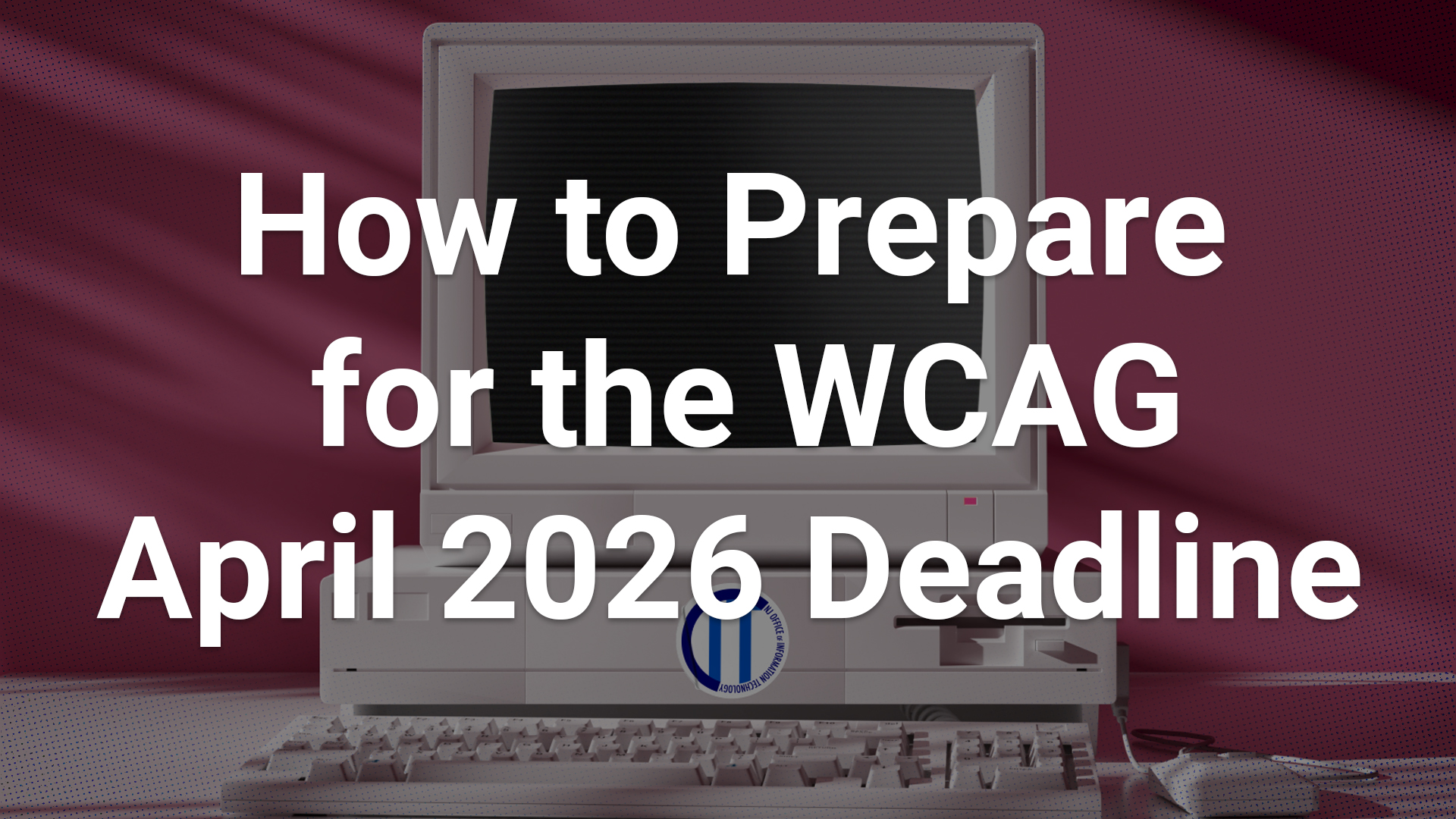New Jersey Web Presence Hub
Accessibility

An accessibility issue refers to any aspect of a website or digital content that hinders or prevents people with disabilities from accessing, navigating, or interacting with it effectively. This can include problems such as insufficient color contrast, lack of keyboard navigability, missing alt text for images, or the use of complex language that is difficult for some users to understand.
On April 24, 2024, the Federal Register published the Department of Justice’s final rule updating its regulations for Title II of the Americans with Disabilities Act (ADA). The final rule has specific requirements about how to ensure that web content and applications are accessible to people with disabilities.
Final Rule Requirement: The Web Content Accessibility Guidelines (WCAG) 2.1, Level AA is the technical standard for state and local governments’ web content and mobile apps.
Final Rule Compliance Deadline: April 24, 2026
New Jersey websites, electronic documents and applications, internal and public facing, are required to provide accessible content. The rule applies to both new and existing content, necessitating a thorough review and updates to meet accessibility requirements.
Exceptions & Flexibility
The rule includes five specific exceptions where full compliance may not be necessary:
- Archived Web Content: Content created before the compliance date that is kept solely for reference, research, or record-keeping purposes and has not been modified since being archived.
- Preexisting Electronic Documents: Documents like PDFs and Word files that existed before the rule was enacted.
- Preexisting Social Media Posts: Posts made before the compliance date.
- Content Posted by Unaffiliated Third Parties: Content created and posted by third parties not associated with the public entity.
- Individualized, Password-Protected Documents: Documents that are protected and tailored for specific individuals, such as personalized records.
These exceptions acknowledge that some content may not be practical to update or may not need to meet the same standards as active, frequently accessed digital content.
Implementation Recommendations
Public entities should take proactive steps to meet the new regulations:
- Catalog Technologies: Identify all web content, documents, and apps covered by the new rules.
- Archive Strategy: Plan how to archive necessary content that won't be updated to new standards.
- Accessibility Audits: Regularly check digital content for accessibility issues.
- Update Non-Compliant Content: Develop plans to fix or replace content that doesn't meet WCAG 2.1 standards.
- Future Compliance: Ensure new digital content is accessible from the start.
These steps are crucial to meet legal requirements and ensure equal access for all users.
Resources
- ADA.gov - Fact Sheet
This fact sheet gives a summary of the Title II of the Americans with Disabilities Act (“ADA”) rule. The summary is designed to provide introductory information about the rule’s requirements, particularly for people who may not have a legal background. - A checklist for creating accessible content
A checklist for content creators to help make sure content, links, images, multimedia, tables and colors all meet accessibility rule requirement. - State and Local Governments: First Steps Toward Complying with the Americans with Disabilities Act Title II Web and Mobile Application Accessibility Rule
This resource can help you plan what steps your agency might want to take to begin complying with the rule. Creating and maintaining accessible content takes planning. This resource makes some suggestions to help state governments with that planning. - WebAIM Contrast Checker
The WebAIM Contrast Checker is a tool that helps evaluate the color contrast between text and background colors to ensure they meet accessibility standards. It provides a quick assessment of whether the contrast ratio complies with the Web Content Accessibility Guidelines (WCAG), helping designers and developers create more accessible web content for users with visual impairments. - WAVE (Web Accessibility Evaluation Tool)
The WAVE Web Accessibility Evaluation Tool is designed to help users identify accessibility issues on web pages. It provides a visual analysis of web content by highlighting elements that may not comply with accessibility standards, such as missing alt text, improper heading structures, and contrast issues. - W3C Accessibility Tools
W3C Accessibility Tools offer a suite of resources to help developers and designers ensure their web content complies with accessibility standards, specifically the Web Content Accessibility Guidelines (WCAG). These tools include validators, checkers, and educational materials that assist in identifying and rectifying accessibility issues related to HTML, CSS, and other web technologies. - W3C Tutorials
The tutorials cover various accessibility topics, based on common tasks in web projects. For example, they show you how to provide accessible images and tables using a variety of web technologies, including HTML4, HTML5, CSS3, WAI-ARIA, MathML, and SVG. The concepts and techniques explained in the tutorials apply to other formats as well. - PDF Accessibility Guide
Ensuring that PDF documents are accessible is crucial for providing universal usability, especially for individuals with disabilities. This guide provides a comprehensive overview of checking and fixing PDF accessibility issues using Adobe Acrobat Pro.

Common Accessibility Issues
When designing or enhancing websites and applications, developers and content contributors can implement a variety of strategies to ensure accessibility and minimize obstacles for users with disabilities.
Need More Information?
If you have any questions, contact the Digital Services Unit of the New Jersey Office of Information Technology.
Looking forward to working together to meet the April 24, 2026 deadline.
Back
to top
 Official Site of The State of New Jersey
Official Site of The State of New Jersey